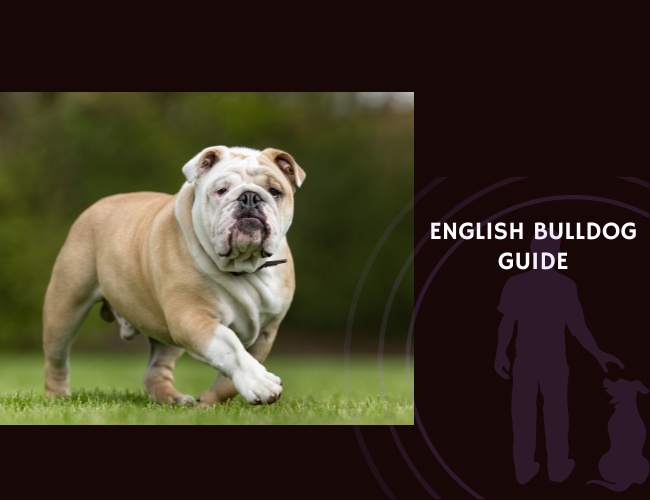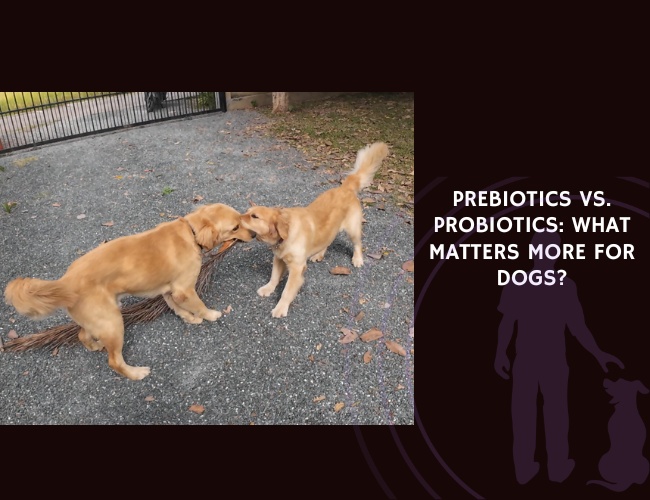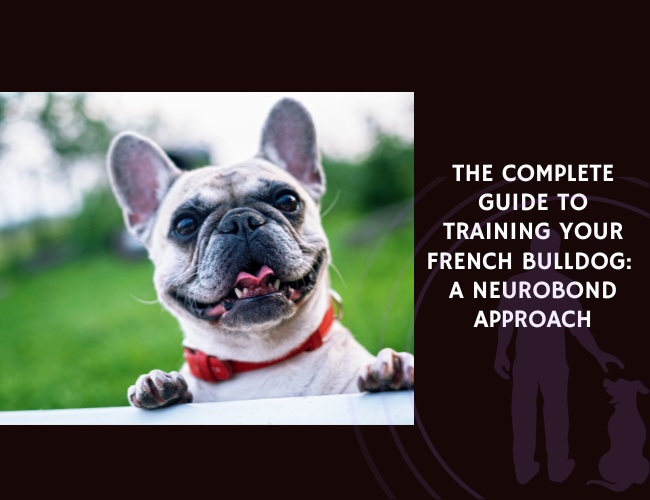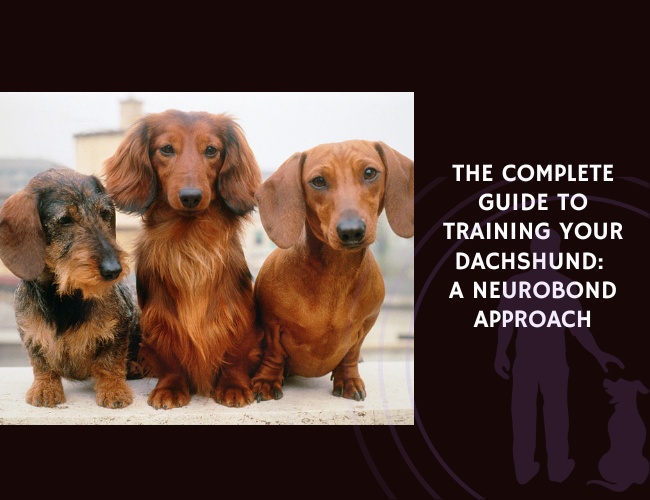Introduction: A Legacy of Loyalty Wrapped in Wrinkles
When you first meet an English Bulldog, you might notice their distinctive waddle, the gentle wheeze of their breathing, or perhaps the way their entire body seems to wiggle with joy despite their stocky frame. These beloved companions, with their wrinkled faces and endearing underbites, have captured hearts for centuries—transforming from fierce bull-baiters to cherished family members who’d rather snooze on your sofa than chase anything more threatening than a tennis ball.
The English Bulldog’s journey from the bull-baiting rings of 13th-century England to modern living rooms tells a remarkable story of selective breeding and human intervention. Today’s Bulldogs bear little resemblance to their athletic ancestors, having been bred for increasingly exaggerated features that, while undeniably charming, come with significant health considerations. Understanding these gentle giants means appreciating both their unwavering devotion and the special care they require to thrive in our homes and hearts. 🧡
Let us guide you through everything you need to know about sharing your life with an English Bulldog—from decoding their unique communication style to managing their specific health needs, all while celebrating the incomparable bond these remarkable dogs form with their human families.
Character & Behavior: The Heart Behind the Wrinkles
Understanding Your Bulldog’s Emotional World
English Bulldogs possess an extraordinary capacity for forming deep, meaningful bonds with their human families. You might notice how your Bulldog seems to sense your moods, offering a gentle lean against your leg during tough times or a playful nudge when you need cheering up. This emotional intelligence, combined with their naturally calm demeanor, makes them exceptional companions for those seeking a steadfast friend.
The depth of their attachment manifests in fascinating ways:
- Following you from room to room with determined, if leisurely, dedication
- Developing unique “greeting rituals” specific to each family member
- Demonstrating remarkable patience with children, often becoming self-appointed guardians
However, their brachycephalic (flat-faced) structure can impact their emotional resilience in unexpected ways. When your Bulldog experiences stress, their already compromised breathing can become more labored, creating a feedback loop of anxiety. This means recognizing and managing stressful situations becomes even more crucial for their emotional well-being.
Temperament: The Gentle Giant’s Personality
Your English Bulldog’s temperament typically reflects a beautiful balance of dignity and playfulness. These dogs exhibit what behaviorists call “low reactivity”—meaning they’re unlikely to startle at sudden noises or react aggressively to unexpected situations. This steady nature makes them excellent urban companions and family dogs.
Male vs. Female behavioral differences deserve special attention:
- Males often display more exuberant greetings, including jumping and sustained eye contact
- Females tend toward subtler expressions of affection and may be more independent
- Both sexes share the breed’s characteristic stubbornness, though it manifests differently
What many interpret as stubbornness might actually be your Bulldog’s way of processing information at their own pace. Their calm exterior often masks an active mind that simply prefers to consider all options before committing to action—a trait that can be both endearing and occasionally frustrating during training sessions.
Social Dynamics: Making Friends on Four Legs
When it comes to interacting with other dogs, English Bulldogs present an interesting paradox. Their intimidating appearance often causes other dogs to approach cautiously, yet most Bulldogs possess remarkably gentle dispositions. You’ll likely observe your Bulldog engaging in what we call “passive socialization”—they’re present and aware but rarely initiate play or confrontation.
Understanding their social signals helps prevent misunderstandings:
- A relaxed, low tail wag indicates contentment and openness to interaction
- Turning their body sideways shows non-threatening intentions
- Snorting or huffing may signal excitement rather than aggression
Some Bulldogs do develop selective friendships, showing clear preferences for certain canine companions while politely ignoring others. This discriminating social nature reflects their overall approach to life: quality over quantity in all things, including friendships.
Communication: Decoding the Bulldog Language
Due to their unique facial structure, English Bulldogs have developed alternative ways to express themselves that go beyond typical canine facial expressions. Your Bulldog’s communication toolkit includes an impressive array of sounds and body language that, once understood, reveals a rich emotional life.
The Bulldog vocalization spectrum includes:
- Gentle whining that often indicates excitement or anticipation
- Various snorts and snuffles that can mean anything from contentment to mild frustration
- A distinctive “talking” sound—a grumbly vocalization used during play or when seeking attention
- Surprisingly loud snoring that, while not intentional communication, becomes part of their charm
Body language becomes particularly important when facial expressions are limited. Watch for the full-body wiggle that indicates pure joy, the deliberate lean that says “I trust you completely,” or the strategic positioning between you and perceived threats that reveals their protective instincts.
Behavioral Considerations: Separating Myth from Reality
Many perceived behavioral “problems” in English Bulldogs actually stem from physical limitations rather than temperamental issues. That “lazy” Bulldog who refuses to fetch might be conserving energy due to breathing difficulties. The “stubborn” dog who won’t come when called might be avoiding exertion in hot weather.
Common misinterpretations to reconsider:
- “Laziness” → Energy conservation due to respiratory constraints
- “Stubbornness” → Careful decision-making or physical discomfort
- “Aloofness” → Difficulty with prolonged physical activity
- “Slow learning” → Processing information while managing physical comfort
Understanding these distinctions allows you to work with your Bulldog’s nature rather than against it, creating a more harmonious relationship built on realistic expectations and genuine understanding. 🐾
Training & Education: Patience, Understanding, and Lots of Treats
Learning Styles: Working With the Bulldog Mind
Training an English Bulldog requires understanding their unique cognitive approach. These dogs are far from unintelligent—they simply process information differently than more traditionally “trainable” breeds. You’ll discover that your Bulldog learns best through positive reinforcement combined with patience and creativity.
Optimizing their learning environment involves:
- Keeping sessions short (10-15 minutes maximum) to prevent physical and mental fatigue
- Choosing cool, well-ventilated spaces to avoid breathing difficulties
- Using high-value treats that motivate without requiring excessive chewing
- Incorporating rest periods between repetitions
The key lies in making training feel less like work and more like a collaborative game. Your Bulldog’s intelligence shines when they’re engaged and comfortable, revealing problem-solving abilities that might surprise you.
Early Socialization: Building Confidence from Puppyhood
The critical socialization window (3-14 weeks) takes on special importance for English Bulldogs. During this time, positive exposure to various stimuli helps develop the emotional resilience that their physical limitations might otherwise compromise. A well-socialized Bulldog puppy grows into a confident adult who can navigate the world despite breathing challenges.
Strategic socialization approaches should include:
- Brief, positive interactions with people of all ages
- Controlled meetings with calm, friendly dogs
- Exposure to urban sounds and sights from a safe distance
- Gentle handling exercises preparing them for veterinary care
Remember that socialization for a brachycephalic breed means quality over quantity. Three positive five-minute experiences trump one exhausting hour-long session every time.
Overcoming Training Challenges: It’s Not Stubbornness, It’s Style
What appears as stubbornness in your English Bulldog often represents a combination of factors unique to the breed. Their decision-making process tends to be more deliberate than impulsive, leading to what trainers call “latency”—the pause between command and response that can test your patience.
Working with Bulldog latency requires:
- Allowing extra processing time after giving commands
- Avoiding rapid-fire instruction sequences
- Celebrating delayed but correct responses
- Recognizing when breathing difficulties impact performance
You might notice your Bulldog performs differently in various environments. This isn’t defiance—it’s often related to temperature, humidity, or stress levels affecting their respiratory comfort. Adapting your expectations to environmental conditions shows respect for their physical needs while maintaining training consistency.
Cooperative Care: Building Trust Through Gentle Handling
English Bulldogs require more frequent veterinary care than many breeds, making cooperative care training essential. Teaching your Bulldog to actively participate in their own care reduces stress for everyone involved and can literally be life-saving in emergency situations.
Essential cooperative care behaviors include:
- Voluntary chin rests for ear cleaning and eye care
- Relaxed positioning for skin fold maintenance
- Calm acceptance of breathing assessments
- Cooperative nail trimming positions
Start these exercises early, using positive reinforcement to create pleasant associations with handling. Your Bulldog’s trust in you during these vulnerable moments strengthens your overall bond while ensuring necessary care can be provided safely.

Respiratory-Conscious Training Protocols
Every training plan must account for your Bulldog’s breathing limitations. This doesn’t mean lowering standards—it means adapting methods to ensure success without compromising health. Watch for signs of respiratory distress: excessive panting, blue-tinged gums, or reluctance to continue.
Breathing-friendly training modifications:
- Use verbal markers instead of requiring physical movement for every reward
- Train during cooler parts of the day
- Keep water readily available
- Build duration gradually, starting with single repetitions
- Consider clicker training to minimize physical demands
Remember, a Bulldog who associates training with discomfort will become genuinely stubborn. By prioritizing their respiratory comfort, you create positive learning experiences that encourage willing participation. 🧡
Nutritional Recommendations: Feeding for Health and Happiness
Caloric Balance: Walking the Obesity Tightrope
English Bulldogs face a unique nutritional challenge: their low metabolism combined with exercise limitations creates a perfect storm for weight gain. You’ll need to become an expert at reading your Bulldog’s body condition, as even small amounts of excess weight can significantly impact their breathing and joint health.
Calculating appropriate portions requires considering:
- Base metabolic rate (typically 25-30% lower than similarly sized breeds)
- Actual activity level (often overestimated by owners)
- Life stage requirements (puppies need different nutrition than seniors)
- Individual health conditions affecting metabolism
The ideal Bulldog body condition shows a slight waist when viewed from above, with ribs easily felt but not visible. Many Bulldogs labeled “perfect weight” by their loving owners are actually carrying excess pounds that strain their already challenged systems.
Supporting Joints and Skin Through Nutrition
Your Bulldog’s diet plays a crucial role in managing breed-specific health concerns. The right nutritional support can mean the difference between a dog who struggles with chronic skin infections and one whose wrinkles stay healthy and clean.
Key nutritional supplements for Bulldogs include:
- Glucosamine and chondroitin for joint support (starting early as prevention)
- Omega-3 fatty acids for skin health and inflammation reduction
- Probiotics to support digestive health and immune function
- Antioxidants to combat cellular stress from labored breathing
Quality proteins support muscle maintenance while avoiding excessive calories. Look for foods where real meat is the first ingredient, avoiding by-products and fillers that provide empty calories without nutritional benefit.
Digestive Sensitivities: Managing the Bulldog Belly
If you’ve spent any time with an English Bulldog, you’re likely familiar with their legendary flatulence. While often played for laughs, excessive gas can indicate digestive distress that impacts quality of life. Your Bulldog’s shortened digestive tract and tendency to gulp air while eating contribute to these issues.
Strategies for digestive comfort include:
- Slow-feed bowls to reduce air ingestion
- Elevated feeding stations to improve swallowing mechanics
- Limited ingredient diets to identify triggers
- Multiple small meals rather than one or two large ones
- Avoiding common triggers like dairy, soy, and corn
Pay attention to your Bulldog’s stool quality as an indicator of digestive health. Firm, well-formed stools suggest good nutritional absorption, while chronic soft stools warrant dietary investigation.
Enrichment Feeding: Mental Stimulation Without Overexertion
Feeding time offers an excellent opportunity for mental enrichment that doesn’t tax your Bulldog’s respiratory system. Puzzle feeders and interactive toys can transform mealtime into an engaging activity that satisfies their problem-solving instincts.
Appropriate feeding enrichment tools:
- Lick mats for wet food or treats (promotes calm behavior)
- Simple puzzle bowls that don’t require excessive movement
- Frozen Kong toys for hot weather enrichment
- Snuffle mats for gentle foraging behavior
Monitor your Bulldog during enrichment feeding to ensure they’re not becoming frustrated or overexerted. The goal is gentle mental stimulation, not physical challenge.
Allergy Management: When Food Becomes the Enemy
English Bulldogs frequently develop food allergies or intolerances that manifest as chronic ear infections, persistent paw licking, or recurring skin fold infections. Identifying and eliminating trigger ingredients can dramatically improve quality of life.
Implementing an elimination diet:
- Start with a novel protein and carbohydrate source
- Maintain strict adherence for 8-12 weeks
- Gradually reintroduce ingredients one at a time
- Document all reactions meticulously
- Work with your veterinarian throughout the process
Common allergens for Bulldogs include chicken, beef, wheat, and eggs, though any protein can potentially cause reactions. The investment in identifying triggers pays dividends in reduced veterinary visits and improved comfort for your companion. 🐾
Stoic. Sensitive. Stubborn.
Your Bulldog listens with their body, not just their ears.
While they may not leap at commands, English Bulldogs absorb the emotional tone behind your words. They require a training language grounded in empathy and physical comfort rather than pressure, revealing a deeper intelligence hidden beneath their stoic surface.
Connection grows through touch and trust, not tension.
Handling exercises—chin rests, calm inspections, gentle restraint—aren’t just for vet prep; they teach your Bulldog that their body is safe in your hands. These routines establish rituals of safety that reinforce mutual respect and reduce fear during necessary care.



Stubbornness is just a slower kind of certainty.
Bulldogs don’t rush into obedience—they weigh, process, and respond on their own timeline. What may seem like resistance is often a breed-specific rhythm of learning, one that rewards patience and consistency over force or fast results.
Health Management: Proactive Care for Unique Needs
Brachycephalic Obstructive Airway Syndrome (BOAS): The Breathing Challenge
BOAS represents the most significant health concern for English Bulldogs, affecting virtually every aspect of their lives. Understanding this condition empowers you to make informed decisions about your Bulldog’s care and recognize when intervention is necessary.
Recognizing BOAS severity levels:
- Mild: Noisy breathing during exercise, occasional snoring
- Moderate: Persistent snoring, exercise intolerance, occasional gagging
- Severe: Breathing difficulty at rest, cyanosis (blue gums), collapse episodes
Early intervention can prevent progression. Surgical options like soft palate resection and stenotic nares correction can significantly improve quality of life when performed by experienced surgeons. However, these procedures carry risks that must be carefully weighed against potential benefits.
Orthopedic Concerns: Supporting the Bulldog Frame
The English Bulldog’s unique conformation places extraordinary stress on their skeletal system. Hip dysplasia, elbow dysplasia, and luxating patellas occur at higher rates than in many breeds, often manifesting early in life.
Preventive orthopedic care strategies:
- Maintain optimal weight from puppyhood
- Provide appropriate surfaces (avoid slippery floors)
- Use ramps instead of stairs when possible
- Implement gentle, regular exercise
- Consider prophylactic joint supplements
Watch for subtle signs of discomfort: reluctance to jump, bunny-hopping gait, or favoring one side. Early detection and management can slow progression and maintain mobility longer.
Skin Fold Management: Preventing Problems in the Wrinkles
Those adorable wrinkles that give Bulldogs their characteristic appearance require diligent care to prevent painful infections. The warm, moist environment within skin folds creates ideal conditions for bacterial and fungal growth.
Daily skin fold care routine:
- Gently clean folds with unscented baby wipes or specialized solutions
- Thoroughly dry each fold with soft cloth
- Apply veterinary-approved barrier cream if needed
- Check for redness, odor, or discharge indicating infection
- Pay special attention to face folds, tail pocket, and any body wrinkles
Establishing this routine early makes it a bonding experience rather than a struggle. Many Bulldogs learn to enjoy the attention and gentle massage that comes with proper fold care.
Cardiac and Heat Management: Protecting the Bulldog Heart
English Bulldogs face increased risk of congenital heart defects and are extraordinarily vulnerable to heat stroke. These two concerns often interconnect, as cardiac issues reduce heat tolerance while overheating stresses the cardiovascular system.
Creating a heart-healthy environment:
- Maintain consistent cool temperatures indoors
- Never leave your Bulldog in vehicles, even briefly
- Exercise only during cool parts of the day
- Provide cooling mats and fresh water constantly
- Learn to monitor respiratory rate and effort
Consider your Bulldog’s comfort zone to be between 60-70°F (15-21°C). Temperatures above 75°F (24°C) require extra precautions, while anything above 80°F (27°C) poses serious risk.
Reproductive Realities: The Cost of Extreme Conformation
The English Bulldog’s reproductive challenges stem directly from selective breeding for extreme physical traits. Understanding these realities helps explain the breed’s high purchase price and the ethical considerations surrounding Bulldog breeding.
Breeding challenges include:
- Natural mating often impossible due to conformation
- Cesarean sections required in 80-90% of births
- High puppy mortality rates
- Increased anesthetic risks during procedures
- Significant financial investment for responsible breeding
These factors make spaying/neutering particularly important for pet Bulldogs, eliminating reproductive cancer risks while avoiding contributing to irresponsible breeding practices. 🧡

Lifestyle & Environment: Creating the Perfect Bulldog Haven
Apartment Living: Size Isn’t Everything
English Bulldogs can thrive in apartments, making them popular urban companions. Their low exercise needs and generally quiet nature (snoring aside) suit smaller living spaces well. However, certain modifications ensure comfort for both you and your neighbors.
Optimizing apartment life involves:
- Installing adequate air conditioning for year-round comfort
- Using white noise machines to mask snoring for neighbors
- Creating designated cool zones with tile or cooling mats
- Establishing routine bathroom breaks to prevent accidents
- Providing mental enrichment to compensate for limited space
Your Bulldog’s contentment depends more on your presence than square footage. A small apartment with an attentive owner beats a large yard with minimal interaction every time.
Exercise Requirements: Quality Over Quantity
Forget images of dogs running miles alongside joggers—your English Bulldog’s exercise needs are refreshingly modest. However, appropriate activity remains crucial for maintaining healthy weight and joint function.
Appropriate exercise options include:
- Multiple short walks (10-15 minutes) rather than long excursions
- Indoor play during temperature extremes
- Swimming in controlled environments (with life vest support)
- Gentle tug-of-war games that don’t require running
- Mental exercise through training and puzzle toys
Monitor breathing throughout any activity. If your Bulldog needs more than five minutes to recover normal breathing after exercise, you’ve likely pushed too hard.
Separation Tolerance: Building Independence Gently
English Bulldogs typically form such strong bonds with their families that separation can cause distress. While some individuals adapt well to alone time, others develop separation anxiety that manifests as destructive behavior or excessive vocalization.
Building healthy independence:
- Start with very brief departures during puppyhood
- Create positive associations with alone time using special toys
- Maintain calm departures and arrivals to reduce anxiety
- Consider doggy daycare for extended absences
- Use cameras to monitor stress levels when alone
Remember that your Bulldog’s physical limitations mean they can’t engage in the frantic behaviors some anxious dogs display. Watch for subtler signs like excessive drooling or lethargy after your return.
Seasonal Adaptations: Year-Round Comfort Strategies
Each season brings unique challenges for English Bulldogs. Your role involves anticipating these challenges and creating environmental modifications that maintain comfort regardless of weather.
Seasonal care considerations:
Summer:
- Pre-dawn and post-sunset activity only
- Cooling vests for necessary daytime outings
- Frozen treats and ice cubes for enrichment
- Multiple water stations throughout living space
- Emergency cooling protocols readily available
Winter:
- Protective clothing for temperature regulation
- Paw protection from salt and ice
- Indoor exercise alternatives
- Monitored heating to prevent dry air issues
- Adjusted feeding to account for increased caloric needs
Spring/Fall:
- Allergy management for environmental sensitivities
- Gradual adjustment to temperature changes
- Increased skin fold care during humid periods
- Modified exercise as temperatures fluctuate
The Ideal Bulldog Owner: A Perfect Match
English Bulldogs flourish with owners who understand that their needs differ from typical dog ownership expectations. The perfect Bulldog owner values companionship over athleticism and finds joy in quiet moments of connection.
Characteristics of successful Bulldog owners:
- Patient and understanding of physical limitations
- Financially prepared for ongoing medical expenses
- Home-focused lifestyle that doesn’t require extensive travel
- Appreciation for subtle communication and gentle humor
- Commitment to preventive care and daily maintenance
If you’re seeking a jogging partner or agility competitor, the English Bulldog isn’t your match. But if you want a devoted companion who’ll share your couch, make you laugh with their antics, and love you with unmatched loyalty, you’ve found your perfect friend. 🐾
Senior Care: Ensuring Comfort in the Golden Years
Recognizing Age-Related Changes
English Bulldogs typically enter their senior years around age 6-7, earlier than many breeds due to their numerous health challenges. Recognizing and adapting to age-related changes ensures your companion’s comfort during their golden years.
Common senior Bulldog changes:
- Increased breathing difficulty requiring environmental modifications
- Arthritis affecting already-stressed joints
- Decreased heat tolerance demanding extra vigilance
- Cognitive changes potentially causing confusion or anxiety
- Reduced immunity necessitating preventive care adjustments
Your senior Bulldog may slow down gradually or seem to age overnight. Either way, your flexibility and attentiveness make the difference between mere survival and continued quality of life.
Adapting Care for Senior Needs
As your Bulldog ages, every aspect of their care requires reassessment and potential modification. What worked at age three may prove inadequate or even harmful at age eight.
Senior care modifications include:
- More frequent, shorter veterinary visits to catch problems early
- Adjusted nutrition for slower metabolism and changing needs
- Orthopedic bedding to support aching joints
- Ramps replacing any remaining stairs
- Increased skin fold care as immunity decreases
Pain management becomes particularly crucial. Bulldogs often hide discomfort well, making subtle behavioral changes your primary indicator that intervention is needed.
Quality of Life Considerations
The Bulldog’s numerous health challenges mean quality of life discussions may arise earlier than with other breeds. Honest assessment of your companion’s daily experience helps guide difficult decisions with love and wisdom.
Quality of life indicators to monitor:
- Breathing comfort at rest and during minimal activity
- Interest in food and treats
- Engagement with family members
- Ability to eliminate without distress
- Presence of more good days than bad
Remember that your Bulldog’s quality of life depends not on meeting typical dog standards but on their individual capacity for comfort and connection. A Bulldog who can no longer walk far but still enjoys gentle petting and treat puzzles may have excellent quality of life by their own standards.
Conclusion: Is the English Bulldog Right for You?
After exploring the complex world of English Bulldog ownership, you might feel both enchanted and sobered. This dichotomy perfectly captures the Bulldog experience—immense rewards balanced with significant responsibilities.
The English Bulldog might be your perfect match if:
- You value companionship over athletic partnership
- Your lifestyle accommodates frequent health management
- You’re financially prepared for ongoing medical expenses
- You find joy in subtle communication and gentle humor
- You can provide a climate-controlled, calm environment
- You understand that less activity doesn’t mean less love
You might want to consider other breeds if:
- You enjoy active outdoor pursuits with your dog
- Extensive travel is part of your lifestyle
- Dog-related expenses need to be minimal
- You prefer independent, low-maintenance pets
- Your climate features temperature extremes
- You’re seeking a first dog with minimal health concerns
The English Bulldog offers something no other breed can match: unwavering devotion wrapped in a wrinkled, snorting package that transforms daily life into a series of small joys. Their health challenges are real and significant, but for the right owner, the rewards far outweigh the responsibilities.
Every Bulldog owner has stories of midnight snoring symphonies, stubborn standoffs during training, and veterinary bills that rival car payments. Yet ask any of them if they’d choose differently, and you’ll likely see tears well up as they describe the indescribable bond they share with their wrinkled companion.
In the end, choosing an English Bulldog means choosing to see past physical limitations to the enormous heart within. It means accepting that your dog’s life may be shorter but determining to make it richer. It means learning that true athleticism isn’t always about running fast or jumping high—sometimes it’s about the incredible feat of stealing your heart with a single, snuffling sigh.
If you’re ready for this unique journey, if you can embrace both the challenges and the incomparable rewards, then welcome to the wonderful world of English Bulldogs. Your life is about to become messier, more expensive, and absolutely filled with a love that defies description. And once you’ve been loved by a Bulldog, no other love quite compares. 🧡🐾









